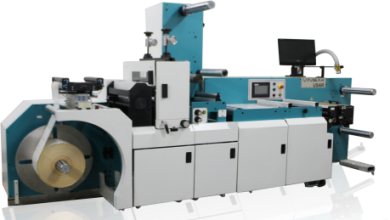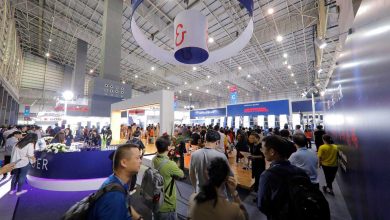2016–17 sparks both excitement and concern for the printing industry
The SGI Dubai 2017 Knowledge Series, organized by International Expo Consults in September 2016, brought together UAE-based manufacturers and distributors who discussed the current state of the Middle East printing and related industries, opportunities, threats, as well as new applications and growth trends in the signage, textile, and 3D printing sectors. Here’re some views expressed by the participants.
Karthik Murugesan, sales manager, Roland, Emirates Computers
“The signage industry in the UAE is poised to benefit from the infrastructure developments planned for the next few years as well as growth in the retail and entertainment industries. As demand for digital and conventional signage is likely to grow, the traditional signage industry should take a more holistic approach to signage and how it influences customer perception.
There was a time when print service providers catering to out-of-home (OOH) advertising could expect the major chunk of the advertising budget. Today, digital signage has become a natural extension of any OOH campaign whether or not it involves printed signage, largely due to advancement in technology and change in user behaviour. This evolution in technology and applications cannot be stopped and therefore should be embraced by industry. The expansion of the signage industry as a result of new digital signage applications could only be better for growth of printed signage.”
Ayman Ali, marketing manager, Canon Middle East
“Trends in the signage industry are influenced directly by new trends in marketing and advertising as well as economic performance and population growth. Brand owners and agencies are allocating a combined budget for integrated marketing which includes print, digital, social media and other channels. Conventional or printed signage is now part of a network which included digital screens, POS displays, kiosks and other installations which provide static or dynamic content or interactivity depending on their locations.
The printing industry must see the bigger picture and accept these trends and find ways to offer complementary solutions to support marketing objectives rather than viewing printed signage services in isolation.
There are several positive indicators for the growth of demand for signage in the Middle East region. If we consider the UAE, the main growth drivers are the retail, entertainment, and MICE industries. In this market, there is a place for all kinds of signage, but as marketers get more innovative with their campaigns and selective with their budgets, it’s important to understand how printing can add value to the marketing and communication goals of companies and brands.”
Jihad Abdeljalil, managing director-MENA, Flex-Europa
“Digital and social platforms have become the advertising media of choice for today’s generation. PSP are finding it difficult to maintain their advertising revenue stream because they are competing with digital channels and social media which offer highly targeted advertising and, in several cases, higher ROI.
This trend will eventually affect demand for outdoor signage. Other factors, too, have affected the growth of the conventional signage industry. Certain segments of signage such has shop signs have undergone huge transformation in the past few years. For example, LED illuminated channel letters have replaced printed backlit signs, which has eroded this revenue stream for PSPs.
Despite the bleak outlook, PSPs can be successful in the Middle East markets provide they tackle the challenges of quality, price, credit, and service.”
Dilawar Dalwai, managing director, Al Mahir Printing Equipment Trading
“The UAE hosts a large number of events, which alone is a big business generator for the signage industry. Some of the exhibitions in Dubai are the biggest of their kind in the world, and there’ll be no shortage of global mega events that can be hosted in the city in the future. I believe such events and related activities will continue to sustain the growth of the signage industry.
However, PSP must tackle the shift in the buying behaviours of brand owners and consumers who are more informed and choosy about spending and brand loyalty. This has created cutthroat competition in the market. Corporate in-house printing is taking off in a big way as large companies seek full control of their marketing communication media, security,and budgets.
In order to compete in such an environment, it is important for PSPs to stay ahead of technology shifts, and realise that technology advancement and innovation calls for fresh investment, processes and talent.”
Panos Bartziokas, general manager, Agfa Graphics Middle East
“The printing industry need long-term indicators of growth, which could be more government spending on infrastructure, tourism, and events. Mega events such as Expo 2020, while they build confidence and kick start projects, need to be supported with long-term growth in sectors such as tourism, hospitality, and retail. We believe the UAE leadership has taken all this into account, and we’ll see the positive outcome of their strategies post the Expo 2020 show.
When analyzing the state of the conventional signage industry, we notice that there has been a lot of speculation over the last 10 years about whether digital signage will replace traditional signage entirely; however that has not yet happened. While digital signage is a great alternative, conventional signage has its advantages and I believe if PSPs understand its full potential, they will discover new revenue streams.”
Elias Bekhaazi, Digital Graphic Systems division manager, Giffin Graphics
“New growth opportunities are being created with new digital printing applications in interior decoration, textile, and packaging. Since 2015, we’ve witnessed a rapid growth in the installation of textile printers and their adoption by the fashion industry. Printing on cotton for home decorative applications is popular in this region. Currently, we’re seeing demand for low-volume production machines, but the market indications are clear that the fashion industry will adopt high-volume production printers in the next few years.
However, for large scale industrial production to take off in this region, it’s a question of cost effectives and price, not technology or consumer demand. I believe the Middle East market is ready for low-volume personalization businesses in the textile sector.”
Philippe Husni, managing director, Heliozid Oce
“From a manufacturing perspective, the garment and textile industry in the region may not be able to print and produce high volume cost-effectively and compete with other markets in Asia, but when we look at it from the retail perspective, this region has a global representation of retail brands, and the high competition requires them to go to market fast, into stores and be ahead of the latest trends.
As consumer demand for localization and personalization increases, brands would want to control these value added services and quality, locally, which would attract more global fashion brands to personalize their textiles for this region.”





